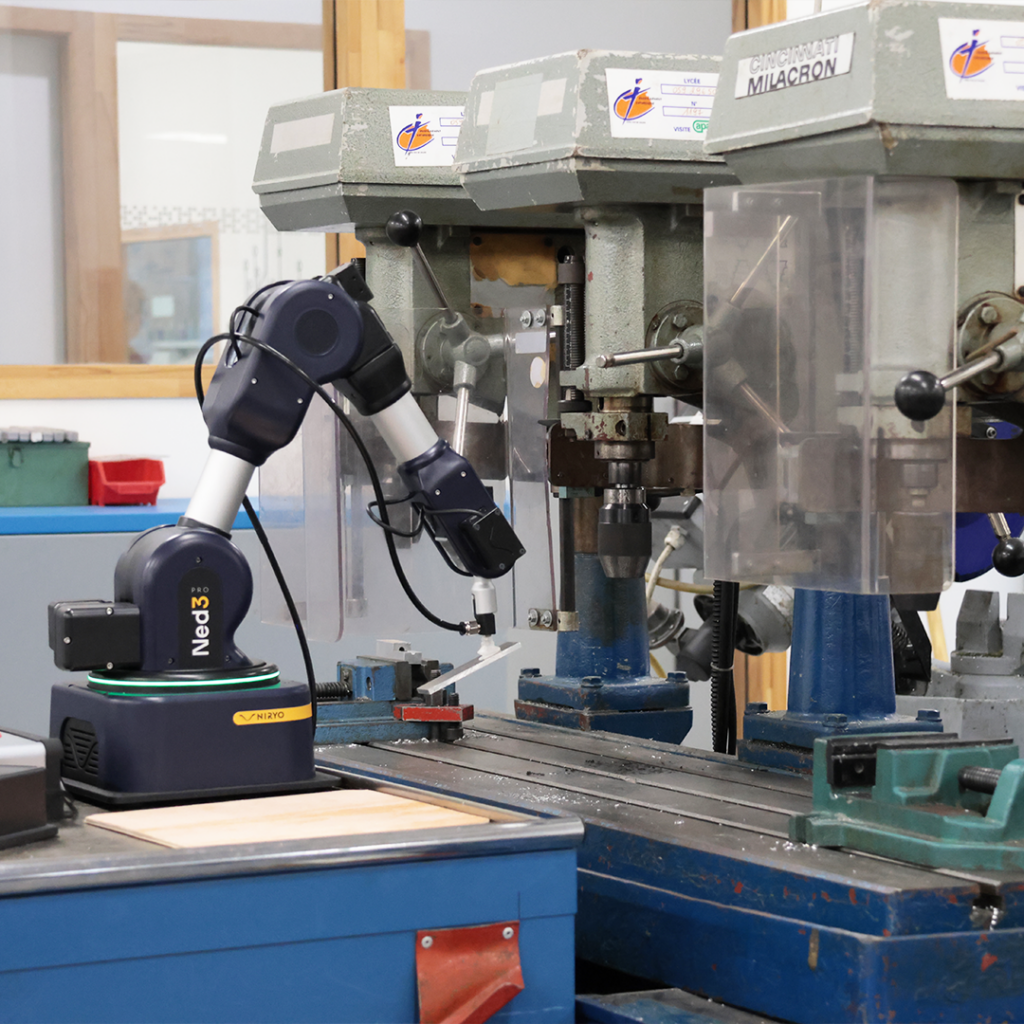As robotics become more accessible and advanced, many organizations are automating repetitive aspects of their work, leading to major transformations in their business operations. In practical terms, how does a robotic solution facilitate automation?
Robotics is profoundly transforming many sectors, reaching a whole new level in terms of efficiency, precision, and adaptability. The combination of AI, machine learning, IoT, connectivity, and other cutting-edge technologies that can be incorporated as technology advances, is enabling robots to handle entirely new and more challenging missions with minimal or no human intervention. Simply put, robotics makes automation easier. How does it achieve this? In this article, we will explore the types of robots used in various sectors and the tangible benefits they bring to businesses.

What is industrial automation?
Industrial automation is the use of control systems, such as robots or computers, to manage various processes and machines in place of human intervention, thereby increasing efficiency and reducing costs. This technology can range from simple actions, such as moving objects with a pick-and-place robot, to more complex systems capable of autonomous intervention in industrial settings.
This transformation began during the Industrial Revolution when machines started changing manufacturing processes. In the following decades, innovations such as the assembly line, programmable robots, and computer-aided manufacturing (CAM) significantly impacted industrial operations.
Today, technologies like the Internet of Things (IoT) and artificial intelligence (AI) elevate automation to a new level, thanks to the advent of smart sensors and advanced control systems that optimize processes in real-time.
Benefits of using robotics
The integration of robotics in businesses and industries offers a number of benefits, including the following:
- Efficiency and productivity
When it comes to automation, robotics significantly enhances the efficiency of production processes by performing tasks at speeds and with accuracy that humans cannot match. In sectors like electronics, a robot can assemble parts more quickly and precisely, leading to increased output.
- Improved precision and consistency
Robots are particularly effective in tasks requiring high levels of precision and consistency. The latest technological advancements, such as vision systems and AI have further enhanced their precision, enabling these machines to “see” and understand their environment. This ensures consistent quality even with large volumes of products.
- Reduced human errors and occupational injuries
Beyond efficiency and precision, robots play a crucial role in handling repetitive and hazardous tasks. In heavy manufacturing and chemical processing, machines manage dangerous materials, thereby reducing the risk of human error and workplace accidents.
- Scalability and flexibility
Robotics allows manufacturers to quickly scale their operations and adapt to evolving production needs. A robot can be reprogrammed and reconfigured for new tasks as product ranges change. This flexibility is especially valuable in sectors where volumes fluctuate constantly.

Types of robots used in industrial automation
There is a wide range of robots used in industrial automation, with each type suited to specific tasks and environments. Here are the main categories:
- Articulated robots
Articulated robots are designed to emulate the movements of the human arm. They are equipped with rotating articulations ranging from two to more than ten interactive points. 6-axis articulated robots are commonly found in manufacturing facilities and are often deployed on assembly lines for functions such as assembly, welding, and painting, where flexibility is essential.
- Automated guided vehicles (AGVs)
AGVs are designed to travel along a predefined path in a room, using either a sensor-based guidance system or a magnetic strip. These robots are used to move materials without the need for direct human intervention.
- Autonomous mobile robots (AMR)
Unlike AGVs, AMRs are more intelligent. They use sensors and cameras to navigate dynamic environments, creating their own path. These robots are capable of performing a range of tasks, including the transportation of materials, loading and unloading items, and towing carts.
- Cartesian robots
Cartesian robots move along three orthogonal axes (X, Y and Z). They are frequently utilized in applications that require linear movements, such as CNC machining, 3D printing, and materials handling. Their configuration allows for high precision in specific industrial applications.
Integrating robotics with other technologies to optimize automation
A robotic solution can also be combined with different technologies to automate various industrial processes, offering clients a comprehensive, end-to-end solution.
- AI and machine learning
In an automation project, integrating AI with components such as processors, neural processing units, and specialized software allows robots to learn from previous actions and make real-time decisions.
For example, machine learning enables these machines to learn specific functions by observing and imitating human actions, while AI provides computer vision, allowing robots to navigate, detect, and respond to their environment.
- IoT (Internet of Things)
This technology plays a major role in creating smart factories, industries, and warehouses, where robots and machines are interconnected and communicate in real-time. For an automation project, an IoT-compatible robot will be equipped with sensors and wireless modules to collect and analyze data. This connectivity allows robots to operate more intelligently, contributing to reduced downtime.
- Collaborative robots (Cobots)
In the past, robots were typically separated from human operators to ensure safety. However, cobots are designed to work directly alongside humans in a shared space. They are equipped with sensors and safety functions that facilitate safe interaction with human operators, ensuring a safe working environment for all.

Primary applications of robotics in industrial automation
A robotic solution can be applied in various contexts, each type of robot offering unique advantages. Common use cases include material handling, pick-and-place, palletizing, welding, assembly, and transportation. Here are some key applications:
- Assembly line
Robots are a vital component of assembly line automation, as they perform repetitive tasks such as component assembly, screwing, welding and adhesive application. Their precision and ability to work continuously make them indispensable tools in sectors such as automotive and electronics.
- Material handling
Mobile robots such as AGVs and AMRs are capable of moving, sorting, and managing materials in manufacturing facilities, warehouses, and distribution centers. They perform tasks such as unloading, palletizing and transporting materials, thereby reducing the manual workload of employees. This type of robot can also be programmed to carry out inventory work.
- Quality control
Quality control is a critical step in any manufacturing process. The use of advanced robotics, equipped with vision systems, sensors and AI, is becoming increasingly common for real-time product inspection. The objective is to detect defects with surgical precision, ensuring top-level quality control in environments such as food manufacturing and the pharmaceutical industry.
























